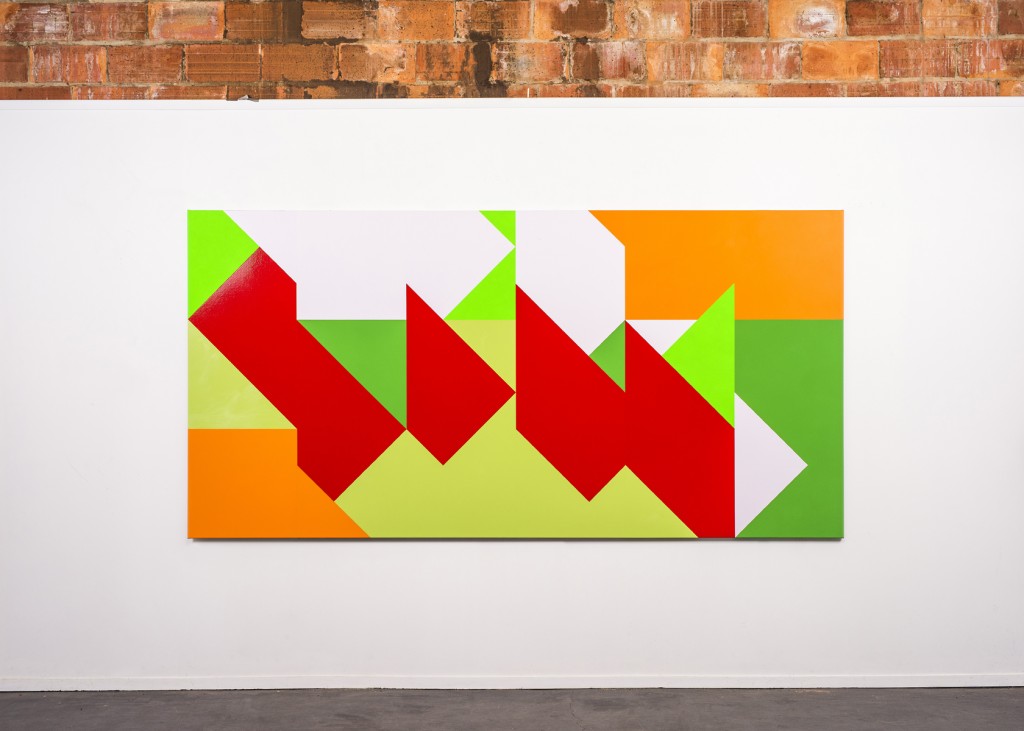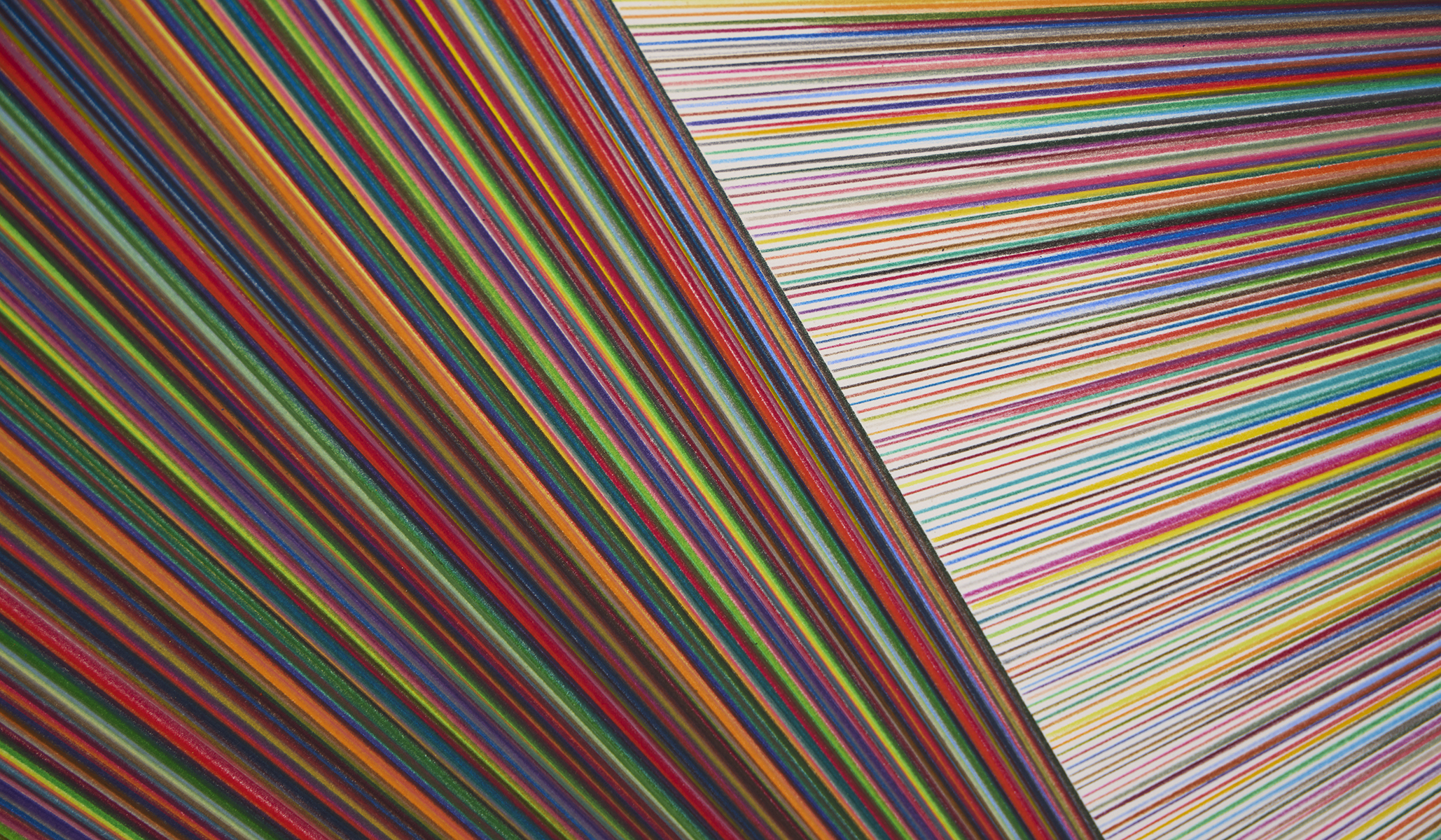“I see our experience of colour each day as a totally random and ever changing sensation. What I want my paintings to do is capture this random sensation, to act as a kind of cross section that breaks it down into its individual parts. The result is colour that is not linked to an object or to any ideas or rules, but is rather simply just colour as itself”
Max Lawrence White
This September, Artereal Gallery introduces the work of Melbourne-based artist Max Lawrence White in Ritual Measures. Quickly emerging as an artist becoming known for his vibrant hard-edge abstract geometric paintings, White’s works celebrate the sensation evoked by pure colour. Striking and dynamic, his chromatic experiments playfully revel in form and colour, transcending expected colour combinations to allow viewers to experience colour in a way that feels fresh and unexpected.

Max Lawrence White’s paintings sing. There is a lyricism to the patterns that dance across his canvases. Colours are placed side by side in combinations that are unexpected and fresh, yet melodious.
Fascinated by the ways in which colour is both perceived and valued, White creates his abstract geometric compositions by working primarily with tins of household paint that his local hardware store have discounted as ‘damaged’ or rejected as ‘mis-tints’. Working with colours sourced in this way, White embraces an element of random serendipity, complementing these paints with a selection of fine art paints that introduce different textures and finishes. From high gloss, to matte, to fluro, to industrial – the eye skips over the various painted surfaces of White’s artworks, which feel at once hard-edge and minimal and yet at the same time sumptuous and vibrantly textured.
“I never mix colours when creating my paintings. All the colours I use are straight from the can or tube and are left unadulterated. I guess the household paints have always been the most affordable and easily available paints for me and the fine art paints and pigments are something that people have gifted to me. The different types of paints that I use when creating each piece tie into ideas around the traditional and non-traditional or conventional and non-conventional dichotomy that runs through my broader artistic practice.”
The unexpected colour combinations which define White’s chromatic experiments aim to disarm the viewer. Deliberately abandoning the traditional rules of colour theory, White is more interested in presenting colour as a sensation. In this sense, Max Lawrence White can perhaps be posited as the artistic latter-day heir to Roy de Maistre. Considered to be one of the first Australian artists to embrace pure abstraction, de Maistre was a pioneer of modern Australian painting – an artist whose paintings linked the colours of the spectrum to notions of spirituality and the notes of the musical scale.
“What is colour? Many accept it unquestioningly – a few, I believe, are almost unconscious of its presence – for others it constitutes an aesthetic pleasure or an interesting scientific phenomenon – the result of light vibrations acting upon their optic nerves. But there are many for whom colour means far more than this – to them it brings the conscious realisation of the deepest underlying principles of nature, and in it they find deep and lasting happiness – for those people it constitutes the very song of life and is, as it were, the spiritual speech of every living thing.”
– Extract from Roy de Maistre’s 1919 lecture, ‘Colour in relation to painting’.
Influenced by his Japanese heritage, White’s practice is imbued with ideas that draw upon a number of Japanese aesthetic principles. Earlier paintings by White were often constructed upon the idea of a 9 x 9 square grid, a subtle visual reference to one of the most common ways in which tatami mats are laid out in Japanese houses. Placement of tatami mats within Japanese culture is never random and always significant. A series of rules, based on traditional beliefs and practise dating back to the Edo period determine which patterns are auspicious and will therefore bring good fortune. Interestingly, White’s square paintings balance this sense of strict formality with an artist’s compulsion to experiment. A process that has led to the development of more recent paintings in which the size of the canvas has doubled, allowing for increased sense of freedom and movement, as colours and shapes trip across broader expanses of canvas.
The lightning bolt zig-zag shaped pattern which defines White’s most recent paintings, alludes to the paper prayers placed in Shinto temples and shrines throughout Japan. Reminiscent of a three-pronged arrow, this simple geometric motif is repeated throughout the series. With each composition presenting a variation on the last.
In composing his paintings, White uses colours to create, not a recognisable and predictable visual melody, where complimentary colours are placed together to create a predictable and recognisable harmony – but a new kind of chromatic experiment defines by colours which clash together in a way that feels new – jarring, bold, dynamic – and entirely contemporary.
Vibrant.
Lyrical.
Fresh.
Experience Max Lawrence White.



